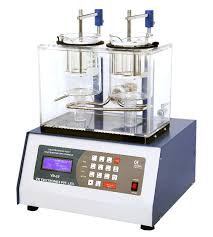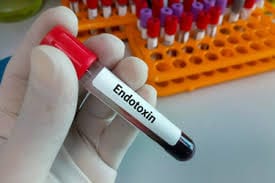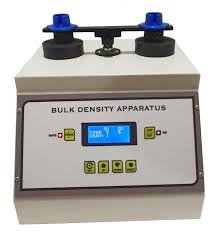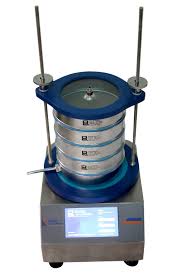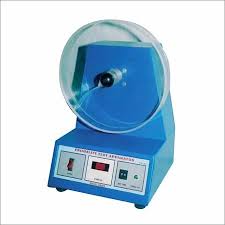|
Getting your Trinity Audio player ready... |
Q4B Annex 5 (R1) General Chapter on Disintegration Test
1. Introduction: Disintegration Test
Disintegration Test: This annex is part of the Q4B process aimed at harmonizing the Disintegration Test General Chapter. The content of this document was compiled by the Pharmacopoeial Discussion Group (PDG). The goal is to standardize methods and provide consistency across the international pharmacopoeial systems, particularly in the context of the Disintegration Test for tablets and capsules. The annex serves as a reference for how these testing procedures can be harmonized across different regions.
2. Q4B Outcome
2.1 Analytical Procedures
The International Council for Harmonisation (ICH) Steering Committee, following a comprehensive evaluation by the Q4B Expert Working Group (EWG), has provided recommendations regarding the use of official pharmacopoeial texts in relation to the disintegration tests for tablets and capsules. Specifically, the following pharmacopoeial references can be considered interchangeable within the ICH regions, subject to certain conditions:
- European Pharmacopoeia (Ph. Eur.): 2.9.1 Disintegration of Tablets and Capsules.
- Japanese Pharmacopoeia (JP): 6.09 Disintegration Test.
- United States Pharmacopeia (USP): Revision Bulletin <701> Disintegration.
However, it is important to note that testing conditions tailored for specific dosage forms are beyond the scope of this annex and the harmonization effort.
2.1.1 Exception for Large Tablets and Capsules
Tablets and capsules that exceed 18 millimeters (mm) in length and require the use of a different disintegration apparatus are excluded from the scope of harmonization. For these forms, the disintegration tests are not considered interchangeable across the three regions. Special apparatus requirements may necessitate region-specific testing protocols.
2.1.2 Special Dosage Forms
For dosage forms classified as delayed-release, gastro-resistant, or enteric-coated—according to the terminology used in the regional compendia—the Disintegration Test described in this annex is not applicable or interchangeable across the ICH regions. These forms are typically subject to different testing conditions, reflecting their specific release mechanisms and formulations.
2.1.3 Product-Specific Parameters
When applying the harmonized disintegration test, product-specific parameters—such as the choice of medium or the inclusion of discs—must be defined in the application dossier. These factors can influence the performance of the test and must be tailored to the specific characteristics of the product being tested.
2.2 Acceptance Criteria
The harmonization of acceptance criteria for the disintegration test is outside the scope of this annex. The relevant acceptance criteria should be clearly outlined in the application dossier submitted for regulatory approval, taking into account the specific requirements of each region and the characteristics of the product.
3. Timing of Annex Implementation
The timing for the implementation of this annex will depend on the regulatory processes of each region. Once the annex is incorporated into the ICH Step 5 regulatory process, it can be used in that region. However, it is important to note that the timing of implementation may vary depending on the region, and stakeholders should be aware of the specific timelines for each jurisdiction.
4. Considerations for Implementation
4.1 General Consideration
When pharmaceutical manufacturers or sponsors modify their existing methods to align with the Q4B-evaluated pharmacopoeial texts referenced in Section 2.1 of this annex, they must follow the established regulatory procedures for handling changes. This includes any necessary notifications, variations, or prior approvals that may be required according to the specific regional regulations for compendial changes. These procedures ensure that any transition to the harmonized test method is compliant with local regulatory frameworks.
4.2 FDA Consideration
The U.S. Food and Drug Administration (FDA) recognizes the possibility of interchangeable methods as outlined in Section 2.1 of this annex. However, the FDA may request that manufacturers provide additional justification or data to demonstrate that the chosen disintegration testing method is appropriate and suitable for the specific product or material, regardless of the origin of the method. This ensures that the chosen test method is validated for its intended use, ensuring product quality and regulatory compliance.
4.3 EU Consideration
In the European Union, the monographs of the European Pharmacopoeia (Ph. Eur.) are mandatory for compliance. However, regulatory authorities may accept references to corresponding texts from other pharmacopoeias—such as the Japanese or United States pharmacopoeias—if the conditions outlined in this annex are met. The application for marketing authorization, renewal, or variation may include such references, provided that the declaration of interchangeability is made in accordance with the annex’s conditions. This allows for a flexible approach while ensuring that the product complies with the Ph. Eur. Chapter 2.9.1 on the disintegration of tablets and capsules.
4.4 MHLW Consideration
In Japan, the Ministry of Health, Labour, and Welfare (MHLW) has agreed to allow the use of pharmacopoeial texts from other regions, as outlined in this annex, as interchangeable methods. The implementation details will be provided through official notifications from the MHLW once the annex is officially incorporated into the regulatory framework. This ensures that Japanese manufacturers can benefit from harmonized disintegration test methods in line with international standards.
4.5 Health Canada Consideration
Health Canada, similar to the other ICH regions, will consider the pharmacopoeial texts referenced in Section 2.1 of this annex as interchangeable, provided that the conditions set forth in this annex are followed. This includes ensuring that the method chosen for disintegration testing is appropriate for the product and complies with Canadian regulatory standards.
5. References Used for the Q4B Evaluation
The Q4B evaluation process referenced a number of key documents and pharmacopoeial texts to arrive at the conclusions contained in this annex:
5.1 PDG Stage 5B Sign-Off Document
The PDG Stage 5B sign-off document (Rev. 1), which was published in the Japanese Pharmacopoeial Forum, Volume 16, number 4 (December 2007), played a key role in the harmonization effort. This document outlined the agreed-upon methodologies and provided the basis for the interchangeability recommendations.
5.2 Pharmacopoeial References for Disintegration Test General Chapter
The following pharmacopoeial texts were used as references for the disintegration test methods described in this annex:
- European Pharmacopoeia (Ph. Eur.): The official text for the disintegration of tablets and capsules, as found in Supplement 6.3 (effective January 2009), specifically reference 01/2009: 20901.
- Japanese Pharmacopoeia (JP): The 6.09 Disintegration Test, as revised in the partial revision of the 15th edition of the Japanese Pharmacopoeia, which was made official on March 31, 2009, via Ministerial Notification No. 190 from the Ministry of Health, Labour, and Welfare.
- United States Pharmacopeia (USP): The Revision Bulletin <701> Disintegration, which was issued on June 6, 2008, and became official on August 1, 2008.
These references provide the foundation for the harmonized disintegration test method and ensure that the tests can be applied consistently across different regions. Each pharmacopoeia maintains its own set of guidelines, but the recommendations in this annex aim to harmonize those guidelines to make the testing process more efficient and universally applicable.
